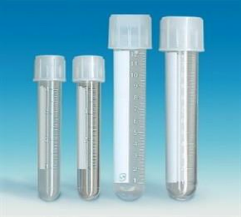Individualized Preventive Medicine

Our office is pleased to announce the availability of highly advanced, extremely accurate, clinical laboratory tests utilizing a small sample of saliva as a source for diagnostic information. Although the tests are billed direct-to-consumer (not covered by insurance), we think many of our patients may benefit.
What is Salivary Diagnostics
Salivary diagnostics is a clinical laboratory testing method that utilizes saliva (or other samples of oral fluid) as a diagnostic medium. Science has made significant progress in discovering human saliva components and analyzing their potential diagnostic value. Sampling of oral fluids, instead of blood or urine, provides an easily available medium for detecting a range of characteristics, including biomarkers such as proteins, electrolytes, hormones, antibodies, and DNA / RNA, as well as, other substances like therapeutic or recreational drugs; advances in many of these tests have improved the ability to identify some of these characteristics at the molecular level. Some salivary tests are once in a lifetime; but other saliva tests require serial testing to help monitor the changes in a patient’s health status, as well as, changes in disease progress.
How it Works
 The sample is easy, fast, and non-invasive to collect by simply swishing with a sterile saline (salt) solution and spitting it into a
The sample is easy, fast, and non-invasive to collect by simply swishing with a sterile saline (salt) solution and spitting it into a
container; the sample is then packed and sent out for laboratory testing.
Advantages
non-invasive collection of readily available diagnostic medium
can help predict the progression of a disease in a patient
can help predict patient response
can provide powerful insight into the genetic component of disease and metabolism
allows for an individualized approach to prevention
optimization of treatment times
can provide information that establishes a prediction of which patients are at risk for disease before clinical signs and symptoms appear
personalized therapy for those patients that require aggressive treatment.
Resources
American Dental Association
Academy of Periodontology
American Academy for Oral Systemic Health
American Hygienists Association
NIH: National Cancer Institute
Centers for Disease Control
Oral Cancer Foundation
Access Genetics
Test Menu
1. Drug Metabolism and Tolerance:
Ever wonder why your Plavix isn’t effective? Or why your pain medicine is not working for you? Or why your blood pressure medicine caused a drastic drop in your pressure? Adverse drug reactions are quite common and are the 4th leading cause of death in the US (100,000 per year per the FDA). A recent study estimates that 70% of patients who have failed at least one medication are currently taking a genetically sub-optimal medication. The ability to understand how a patient metabolizes or breaks down medicine based on their genetics can be helpful. The rate of metabolism (how fast the drug is broken down and eliminated) directly affects health and well-being. This genetic test can help determine which medications and dosages may work best for you. Based on genetics, there are several markers that can help predict whether someone will slowly metabolize a medicine, normally metabolize a medicine, or be an ultra- rapid metabolizer of a specific medicine. For example, an ultra-rapid metabolizer of a medicine, means the medicine is eliminated very fast, and the desired effects may not last as long. The ultra-rapid metabolizer may require more medication or more frequent dosages. On the other hand, a slow metabolizer, may not breakdown or eliminate the medication as quickly as expected; this can result in overdose or toxicity to the medication. This test can help predict metabolism for 90% of FDA approved drugs, thus personalizing prescription medications and dosing decisions based on the genetics.
2. Inflammatory response risk for cardiovascular disease, diabetes, and gum disease:
This genetic test evaluates 8 genes associated with inflammation as a function of immune response, critical factors in: cardiovascular, diabetes, gum disease, and rheumatoid disease severity. Multiple genetic markers provide insight into the genetic component of disease. Reported risk is based on peer-reviewed research data and highly accurate methodology. Through the analysis of gene expression and specific protein markers, a predictable response to environmental and disease causing bacteria leading to chronic inflammation can be determined resulting in significant predictions of vascular inflammation, the formation of atheromatous lesions, destabilization of the atheromatous plaque; inflammation of the beta cells of the pancreas (the basis for insulin resistance in Type II diabetes); destruction of gum ligaments, gingival tissue, and alveolar bone in chronic gum disease; and severity of rheumatoid disease expression in rheumatoid arthritis. This is helpful in establishing which patients are at risk before clinical signs and symptoms appear, determining which patients may require more aggressive treatment, and optimizing timing of return appointments.
3. Periodontal Risk:
Chronic inflammatory gum infections are intimately linked to systemic diseases and overall general health. Utilizing DNA analysis, this test can help predict risk of getting gum (periodontal) disease by detecting genetic changes (DNA polymorphisms) that have been associated with increased incidence and/or progression of chronic gum disease. Identification of this trait before disease begins may prevent negative genetic outcomes through early preventive interventions and aggressive treatment protocols. This test only needs performed once in a lifetime.
4. Periodontal Pathogen Identification:
Understanding that the severity of gum infections and its progression may be detrimental to whole body health, this test may be recommended for existing gum disease that hasn’t responded to previous treatment. It can directly identify 11 specific bacteria in your mouth that cause gingivitis (early stage gum disease) and periodontal disease (mature gum disease); it also determines at what relative amount they are found, allowing for a more precise selection of the correct antibiotics and treatments to control the infection more effectively. This test can be repeated to monitor effectiveness of therapy and changes in pathogens.
5. Herpes Simplex Virus Detection:
Accurately identifies oral vesicles, ulcers and other forms of painful oral and throat lesions caused by herpes simplex virus types 1 & 2.
6. Oral Chlamydia and Gonorrhea Detection:
Chlamydia and Gonorrhea of the mouth are considered infectious and transmissible diseases through intimate contact. A positive test may make you more likely to be at risk for other STDs including HPV and HSV.
7. Oral Candida Fungus Detection:
Identifies all common species of the yeast, Candida; which is known to cause oral thrush in patients with a normal or compromised immune system
8. Oral Human Papilloma Virus Detection:
HPV is an extremely common, sexually transmitted virus, which infects about 79 million Americans today. HPV is best known as the virus that causes genital warts and cervical cancer in women. Head and neck cancers linked to human papilloma virus (HPV) have increased sharply over the past two decades (largely due to changes in sexual customs), while other oral cancer rates have decreased. Fourteen million people will become newly infected each year. The HPV virus may account for more oral cancers than tobacco or alcohol use write essay. Risk for men is greater than women; the number of cases in men is rising.
Of the over 200 strains of HPV, most are harmless. The majority of sexually active Americans, 80%, will be infected by some version of HPV in their lifetimes, and even be exposed to the cancer-causing strains. Specific types of HPV found in the mouth may be predictable for higher risk of HPV-related cancer; recent research has identified Human Papilloma Virus Types 16, 18, 25, 30, 34, 64, 67, 68, 69, 70, 73, 82 as higher risk strains. However, infection with a high-risk HPV virus does not mean that it will develop into oral cancer; of those infected by HPV virus, 99% percent will clear the infection before a malignancy can occur.
Like most cancers, it’s important to detect HPV-related oral cancer early; oral cancers are known to be aggressive and have a tendency to spread (metastasize) to other body sites. The rates of cervical cancers have decreased largely because of better gynecological screening. If known in advance that an HPV infection exists, careful vigilance and periodic evaluations may be recommended to screen for signs of HPV-related oral cancer. Patients with HPV-positive oral cancers usually have better survival rates than those with cancer due to other causes, mostly because HPV-related oral cancer is more responsive to treatment. Early discovery has many positive impacts when you consider cancer: reduction of treatment related morbidity which significantly improves post cancer treatment quality of life, and potentially longer life spans.
This test is also recommended for patients who are sexually active, as well as, those at relative low risk for other causes of oral cancers, such as non-smokers and non-drinkers.

